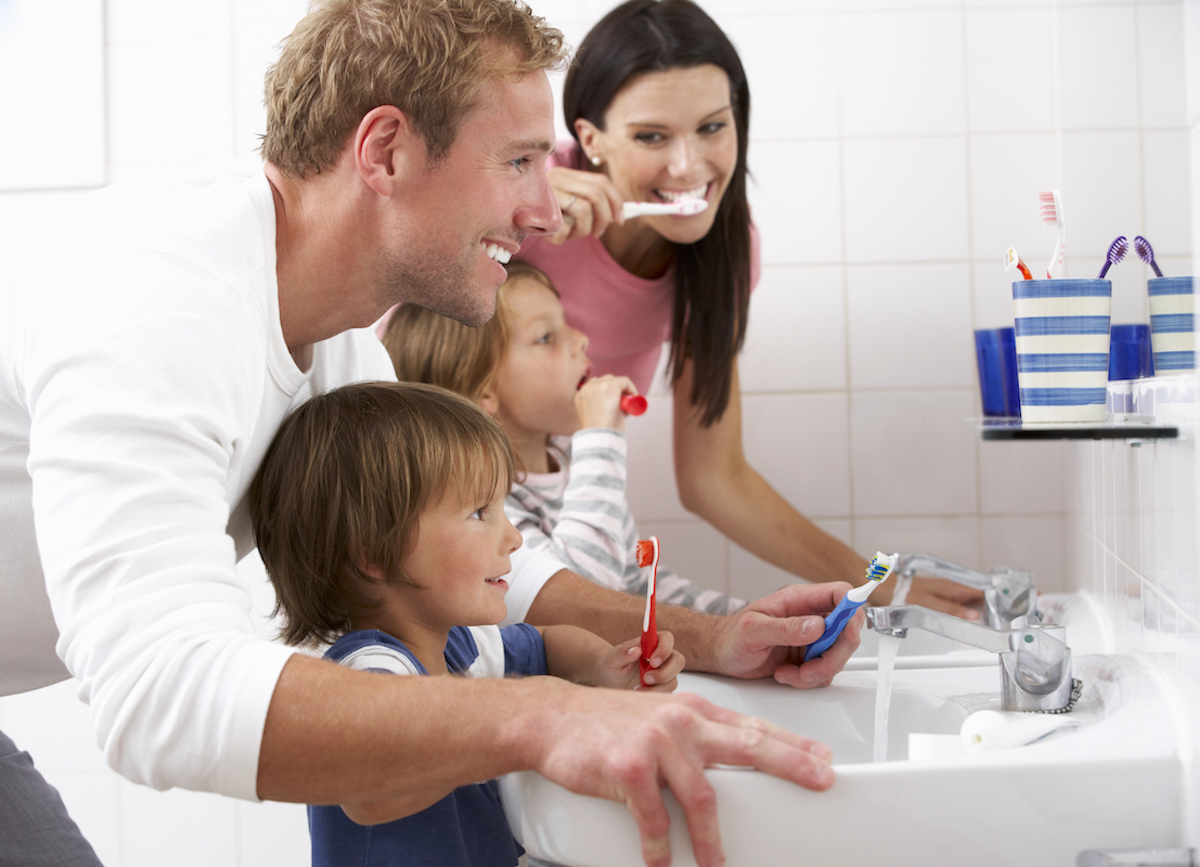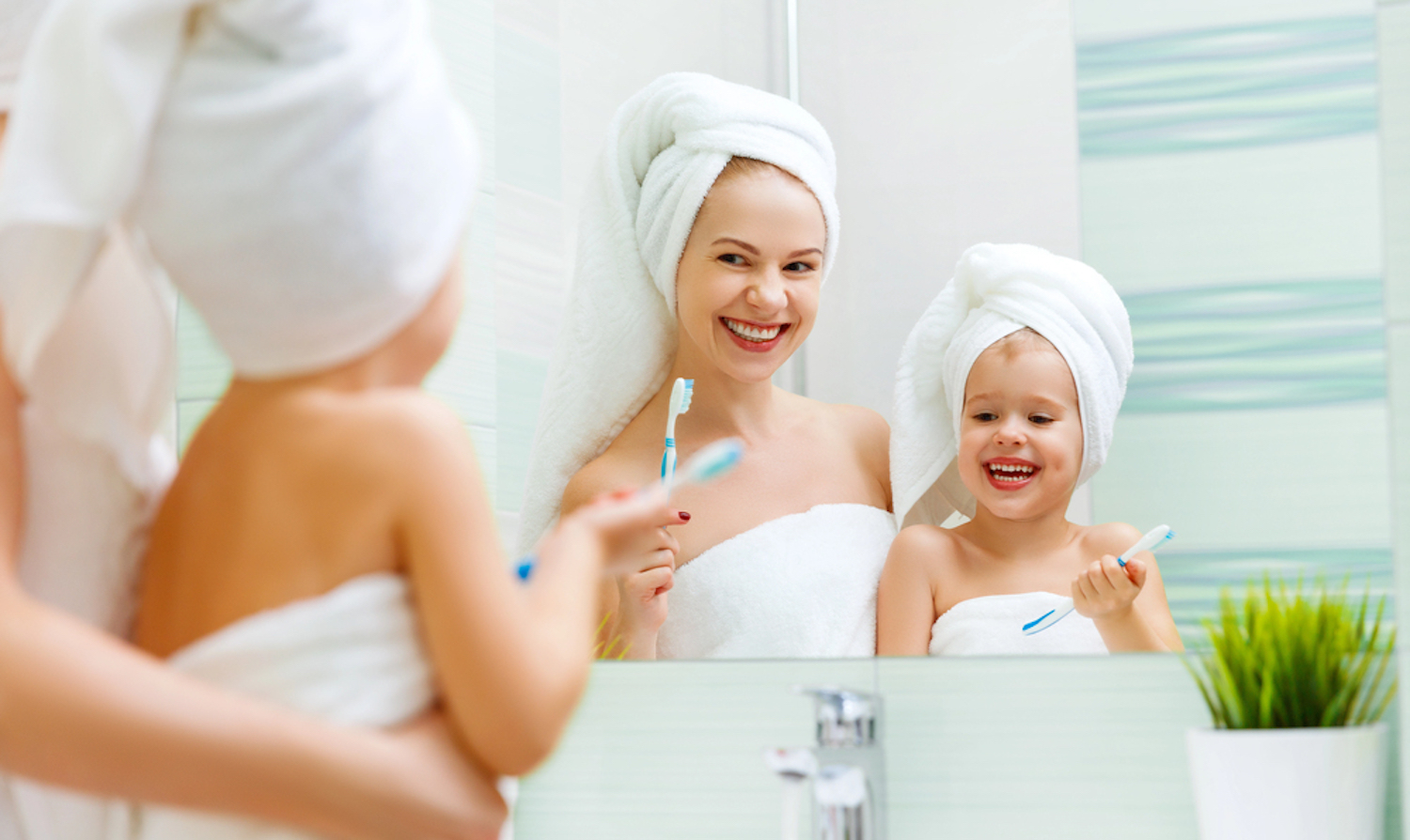By Tabitha Acret – Dental Hygienist, Mum & Advocate for Healthy Smiles
As a dental professional—and more importantly, as a mum—I completely understand the nightly standoff that can erupt when it’s time for the kids to brush their teeth. Yes, even in our house, there are evenings when we all feel like waving the white flag. But developing good oral hygiene habits early on is one of the greatest gifts we can give our kids, and I’m here to tell you it doesn’t have to feel like a chore—for them or for you!
Here are seven tried-and-true tips that can make brushing feel less like a battle and more like a part of the family routine. These are the same strategies I use with my own children and recommend to parents every day in the clinic.
1. Start Early: The Sooner, The Better
The moment that first little tooth pops through those baby gums is the moment you begin your child’s oral health journey. Using a soft, baby-sized toothbrush and just water, gently brush their teeth twice a day. Starting early isn’t just about fighting cavities—it’s about normalising the experience of brushing.
Think of it as sensory training. When your child gets used to the texture and motion of the brush from an early age, it becomes a natural part of their daily rhythm. This consistency sets the stage for a lifetime of healthy smiles and reduces dental anxiety down the track.
2. Let Them Take the Lead (Even if They’re Not Quite There Yet)
It can be tempting to do it all yourself (because, let’s face it, it’s faster and more thorough), but giving your child a turn first empowers them. Even though most children don’t have the manual dexterity for an effective clean until about 8 years old, that doesn’t mean they shouldn’t try.
Encourage their independence: let them brush first, then take your turn. I call it the “grown-up polish!” This gives them a sense of ownership while ensuring they still get a proper clean.
3. Make It a Family Affair
If your little one sees their older siblings or you brushing your teeth, they’ll want to copy you. Kids are natural mimics. Brushing together not only models healthy habits but also turns oral hygiene into a shared family ritual.
In our household, brushing teeth isn’t something you do to your kids—it’s something you do with them. It reinforces that everyone, no matter how big or small, takes care of their teeth.
4. Turn Brushing into a Dance Party (Yes, Really)
Let’s be honest—two minutes can feel like a lifetime to a child. Most kids will happily swish a toothbrush around for 15 seconds and call it a day. But brushing for the full two minutes is essential to effectively remove plaque and prevent cavities.
Instead of nagging, make it fun. Use an egg timer, a brushing app, or our favourite trick—play a song! In our house, we crank up our current favourite tune and brush together. Sometimes there’s a little toothbrush dance action, and that’s totally okay. Movement, music, and joy = positive associations with brushing.
5. Plaque Disclosing Tablets: A Fun Science Experiment at Home
If your child loves experiments or games, this one’s for you. Plaque disclosing tablets are chewable tablets that stain leftover plaque bright colours—usually pink or purple, so kids can see exactly where they missed.
You can find them at your family dental surgery or selected pharmacies. We use them as a friendly competition: whoever has the least plaque wins! It’s a visual, interactive way to teach kids about brushing technique and helps them take pride in their progress.
Bonus: It gives you, the parent, a break from nagging. Let the tablet do the talking!
6. Story Time That Smiles Back: Use Books to Open the Conversation
Books are magical for sparking curiosity, and oral health is no exception. There are countless beautifully illustrated children’s books that explore brushing, visits to the dentist, and even losing baby teeth.
Reading these books together helps kids process what they see and feel during their dental care routines. It also offers a springboard for answering questions and addressing fears in a playful, comforting way.
7. Make the Dentist a Familiar Face, Not a Scary Place
Regular visits to the dentist should be part of your child’s overall wellness routine, not just something that happens when there’s a problem. By starting early and going consistently, your child will build trust and comfort with their dental team.
During these visits, we check for decay, developmental issues, and provide professional cleaning. Many dental practices now use modern techniques like the AIRFLOW® Dental Spa, which uses a gentle mix of air, water, and fine powder to clean teeth without sharp instruments. It’s warm, soothing, and incredibly effective—a far cry from the old scrape-and-polish!
You can even say it’s like a spa treatment for your mouth—and what kid (or adult) doesn’t love that idea?
What If They Still Say No?
Even with all the strategies in the world, some kids dig in their heels. Here are some backup tricks to have up your sleeve:
-
Let them brush your teeth first. Kids love to be in charge.
-
Use a reward chart—stickers can work magic, and a small weekly prize adds excitement.
-
Try brushing in the bath for novelty.
-
Let them choose their own toothbrush and toothpaste—glitter, lights, or superhero characters often do the trick.
-
Brush a favourite toy’s “teeth” first to model the behaviour.
Sometimes, creativity beats routine!
Why Baby Teeth Matter
It’s easy to assume baby teeth aren’t that important since they eventually fall out, but they play a critical role. Baby teeth:
-
Help children chew and speak clearly
-
Hold space for adult teeth
-
Prevent pain and infection caused by decay
Caring for them now lays the foundation for lifelong dental health.
Choosing the Right Toothpaste and Brush
Here’s what to keep in mind when choosing oral care products for your child:
-
Pick a soft-bristled toothbrush with a small head
-
Use fluoride toothpaste (a smear for under 3 years, and a pea-sized amount from 3–6 years)
-
Electric or manual brushes can both work—just make sure your child is comfortable using it
Not sure what’s right? Ask your dentist or hygienist for recommendations based on your child’s age and needs.
Remember: You’re Not Alone
You’re doing a great job—even on the nights when brushing feels like a battle. Oral hygiene is a journey, and every little effort adds up. Keep it fun, stay patient, and remember: a healthy smile is built one tiny tooth at a time.
Even with two decades of experience in oral health, I’ve had plenty of toothbrush tantrums in my own home. Parenting isn’t about perfection—it’s about persistence, patience, and playful problem-solving.
The goal is to build habits and create positive, empowering experiences around oral care. If that means brushing while dancing in your PJs or reading the same tooth fairy book for the 100th time—you’re on the right track.
And yes, sometimes it helps to hear it from someone other than Mum or Dad. That’s why we dental professionals are here—to support your family with tips, encouragement, and the occasional high-five for your brushing champions.
About the Author:
Tabitha Acret is a passionate advocate for preventative care with over 22 years in the dental industry. She graduated from Newcastle University in 2008 with a Bachelor of Oral Health and has worked in both private practice and as a dental educator at Sydney University.
Tabitha currently serves as the National Vice President of the Dental Hygienists Association of Australia (DHAA), is the Northern Territory Director, and Chair of Continuing Education nationally. She’s volunteered her time both in Australia and overseas, championing community dental initiatives and supporting families in building brighter, healthier smiles.









